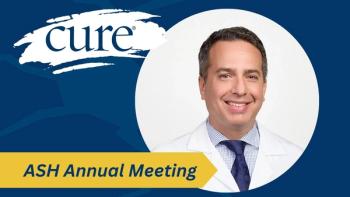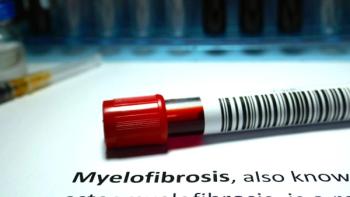
MDS Foundation: Creating A Safe "Space" in Which to Educate Patients and Caregivers
Imagine a beautiful expanse in the Southwest, a desert landscape stretching across sandswept miles until it reaches mountains that rise into the starry night sky.
Imagine a beautiful expanse in the Southwest, a desert landscape stretching across sandswept miles until it reaches mountains that rise into the starry night sky.
The red, teal and tan logo of a sprouting plant that accompanies a comprehensive educational package aimed at patients with myelodysplastic syndromes (MDS) is designed to conjure that vision and the feelings it evokes: welcome, warmth, stability, healing, passion and protection, according to the nonprofit organization behind the effort, the MDS Foundation, Inc.
Building Blocks of Hope — Patient and Caregiver Strategies for LIVING with MDS (BBoH) is a free global print and online patient advocacy initiative that, through education, aims to foster feelings of comfort in those with the disorders and their caregivers.
The resource was developed in 2012 by Sandra Kurtin, an oncology nurse practitioner at the University of Arizona Cancer Center who is also an MDS Foundation Board member. Since then, it’s been continually updated to reflect the ongoing changes in patient care and treatment.
Due to demand from patients and their families, as well as from health care practitioners, BBoH is available not only in English, but also in Canadian English, Canadian French, Chinese, French, German and Turkish. In addition, the resource is being translated into Armenian, Australian, Dutch, Japanese and Spanish, says Susan Hogan, operating director of the New Jersey-based foundation.
“It took me three days, but I have read the entire BBoH book,” one reader wrote in a testimonial on the MDS Foundation’s website. “What a magnificent undertaking on your part. The book is the most comprehensive source I have read. My understanding of MDS and possible treatment options has been greatly increased.”
Myelodysplastic syndromes, or bone marrow failure disorders, occur when bone marrow does not produce enough healthy blood cells. Too many blood cells remain immature, either accumulating in marrow or leading to a dangerous shortage of mature blood cells. The diseases can lead to low counts of red or white blood cells or platelets. In turn, this can cause side effects including infection, anemia, spontaneous bleeding or easy bruising. And for nearly one-third of the patients diagnosed with MDS, this type of disorder will progress to acute myeloid leukemia (AML).
BBoH teaches about the diseases through a variety of media: printed and digital materials; videos; educational slide sets; and links to online resources and practical tools.
The best place to start, the organization suggests, is the BBoH handbook, which provides resources, information and tools to help patients and caregivers through their journeys. The handbook explains MDS, discusses treatment options, offers tips on how to monitor symptoms and when to report them to health professionals, and provides a planning section to help patients and their caregivers track and manage their specific case information.
The MDS Foundation distributes printed copies of the BBoH on a print-as-needed basis to ensure that all copies contain the most updated information available when they are released. Online, the resource can be found at
One advantage to accessing the handbook online is that patients can answer some questions and then get a personalized version of the book.
Besides the BBoH effort, Hogan says, the MDS Foundation conducts international symposia for researchers, clinicians, scientists and educators; the 14th International Symposium will be held in Valencia, Spain on May 3-6, 2017. And it hosts not only patient support groups, but free one-day conferences for patients and caregivers living with MDS. Information about these events can be found at
The foundation also offers an international information network, which refers patients to centers of excellence and connects them with clinical trials, and provides doctors with opportunities to discuss new research and treatment options and get educational support.
Finally, Hogan says, the foundation provides research funding in the form of two-year, $50,000 grants to investigators 40 years of age or younger who are pursuing basic research or clinical study of the causation, epidemiology, molecular biology, cytogenetics, morphology, prognosis and/or management of MDS. Two such awards were given by the MDS Foundation in 2015, and the organization hopes to offer an additional grant in 2016.
The MDS Foundation can be reached at 800-MDS-0839 within the United States, online at
When it comes to the BBoH effort, with every handbook that reaches a patient or caregiver, the MDS Foundation hopes to spread not just education and comfort, but hope. It’s another one of the principles reflected in the logo for the program.
The graphic is “constructed in a wave-like pattern indicating the fluidity of life, health and illness,” organization literature explains. “The single red band which continues up into the plant symbolizes strength and improvement in bone marrow function. The idea of hope for the future and extension of life is emulated in the sprouting plant.”




